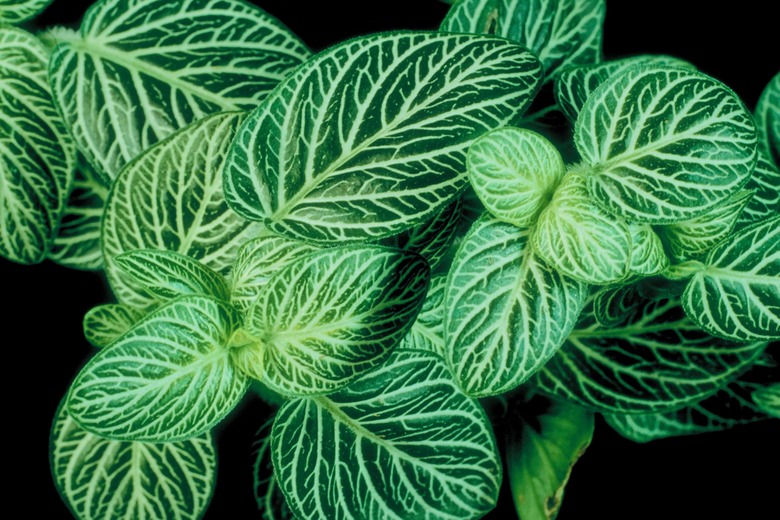Fittonia Plant Care
Fittonia is the Latin name for the plant commonly known as mosaic plant or nerve plant. Fittonias make excellent indoor terrarium plants and feature red, pink, white or silver leaf-vein patterns. Fittonias are compact, averaging 6 inches tall and 12 inches wide.
Soil and Fertilization
Fittonias grow best in rich potting soil that retains water to stay moist but still has adequate drainage. African violet mixtures work well. Do not fertilize newly potted plants for three or four months. After the initial three to four month period, feed your Fittonias with a balanced houseplant fertilizer diluted to half strength every two weeks.
Light, Temperature and Humidity
Fittonias thrive in bright indirect sunlight. Place them near a window facing south or west for best results. One of the reasons Fittonias make such good houseplants is that they flourish in environments with temperatures ranging from 60 to 85 degrees F. Fittonias prefer humid conditions. Grow your Fittonias in a terrarium or place a saucer filled with moist pebbles underneath the pot to increase humidity. Mist them with warm water daily to hydrate the leaves. If you live in a warm, humid climate where winter temperatures do not drop below 60 degrees, you can grow your Fittonias outdoors as a groundcover in shady areas.
Water
Fittonias like warm, moist soil. Do not allow the soil to dry out between waterings. However, oversaturated soil can cause root rot. For best results, keep the soil evenly moist and water with warm water. Discard excess water from trays and plant saucers so that your houseplants do not sit in old water.
Pests and Leaf Problems
Fittonias grown indoors do not generally develop pest problems. However, moist soil can cause fungus gnats that hover above the soil. You can usually get rid of a fungus gnat infestation by repotting your Fittonia in fresh potting soil.
If your Fittonia's leaves turn yellow or appear wilted, you may be over-watering. Decrease the amount of water you give your plant and the leaves should return to their normal color over time. If the plant does not have enough water, it may look folded in or collapsed. Watering it will usually cause it to perk back up quickly as long as it does not go days without water.
If your Fittonia is receiving too much light or not enough humidity, the leaves may look shriveled. Move your plant to a shadier area or mist it with warm water more frequently to remedy the problem.
